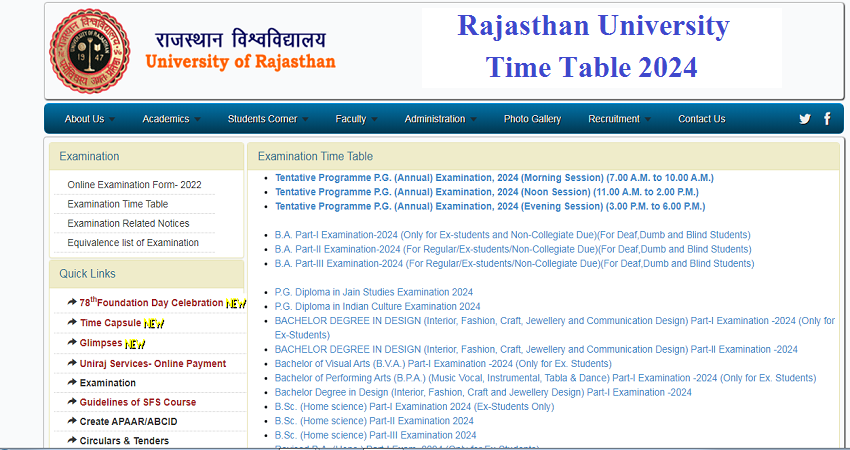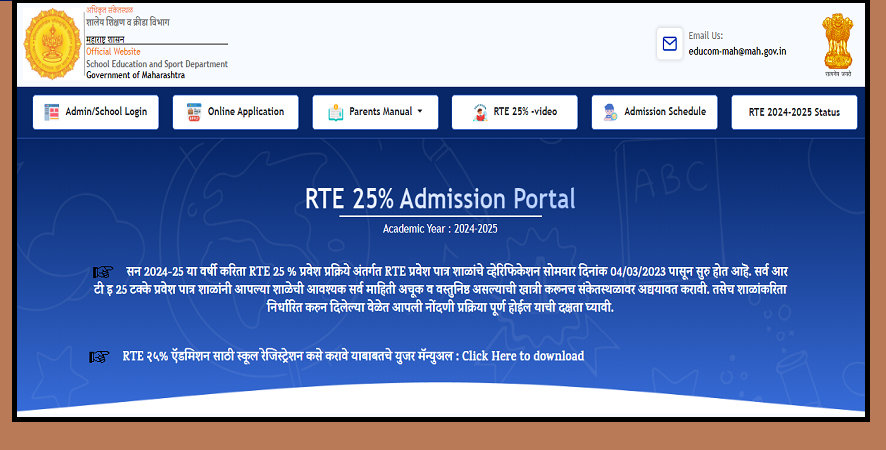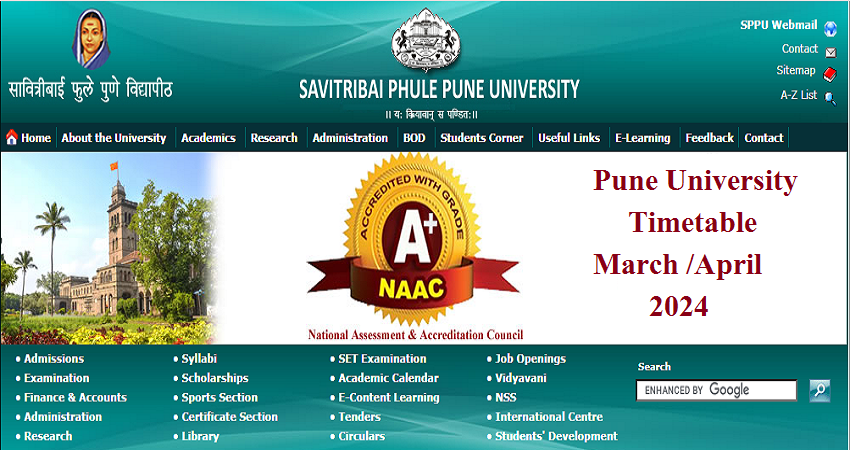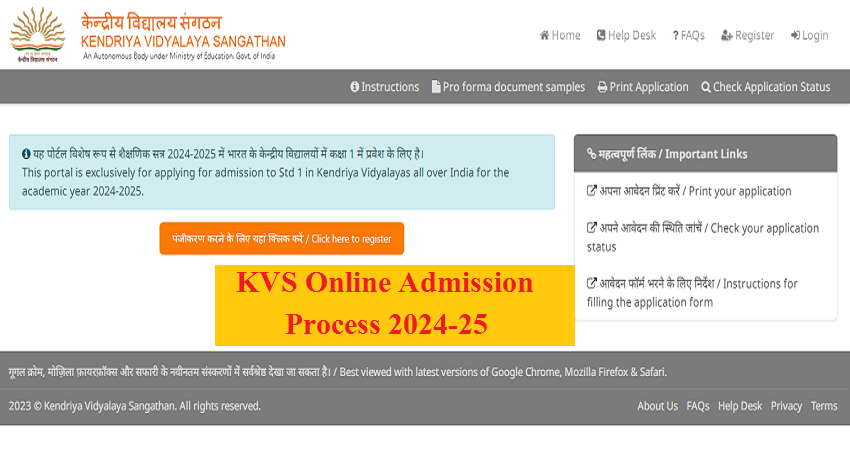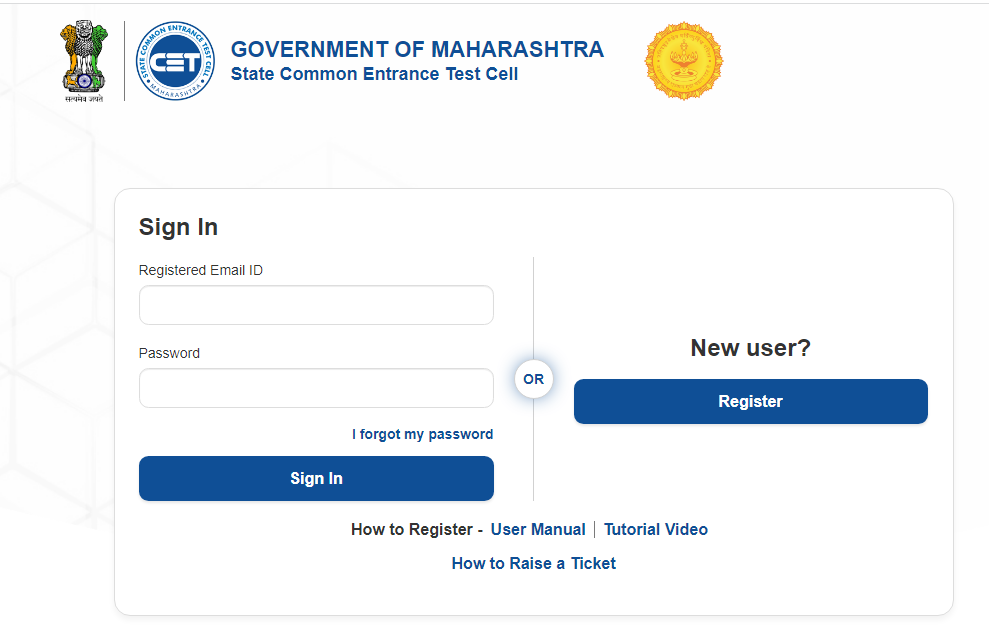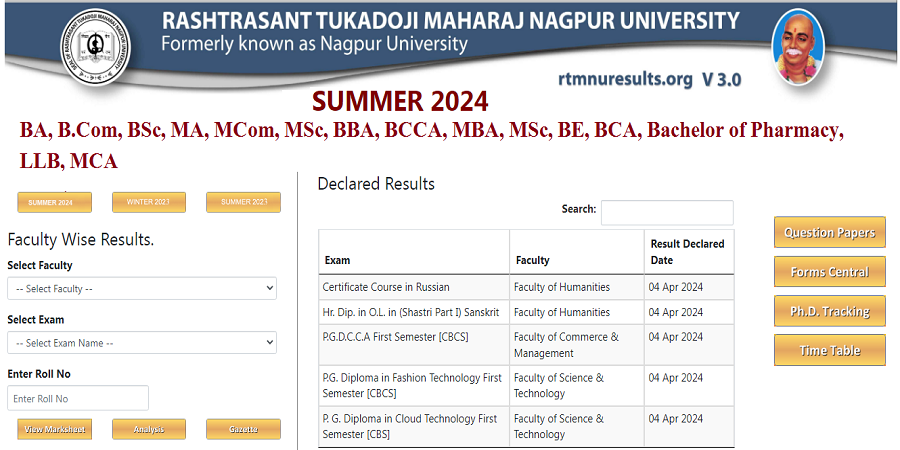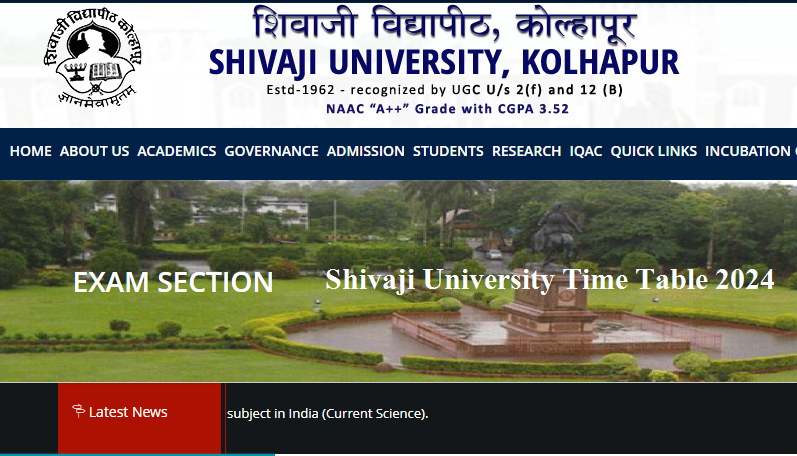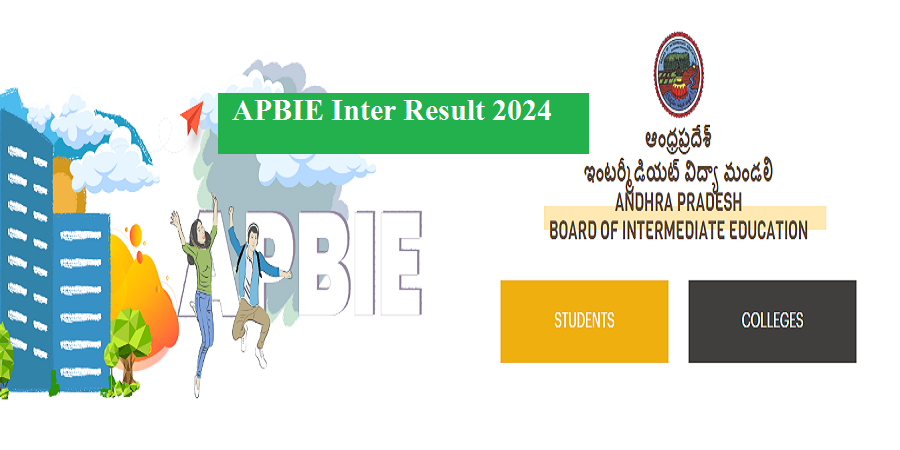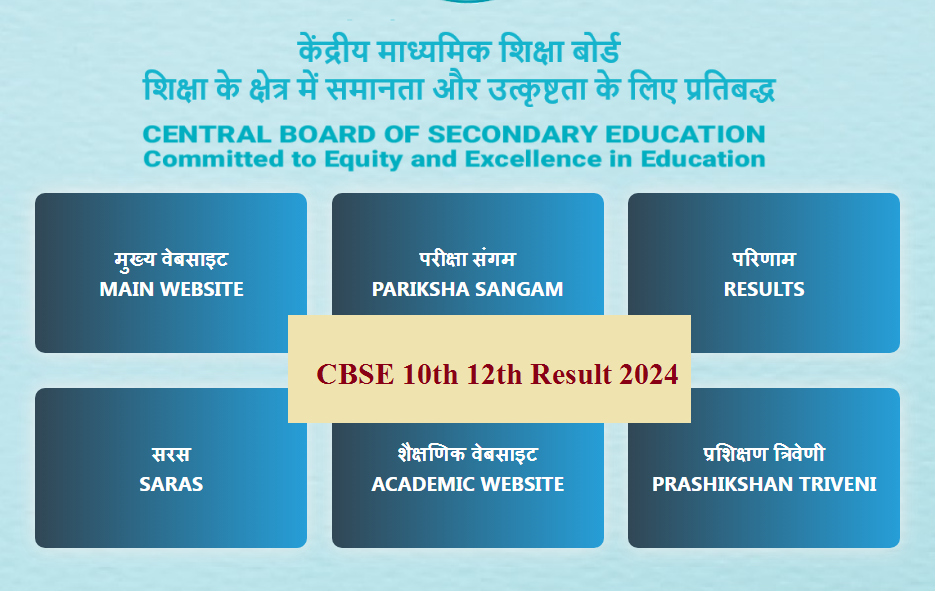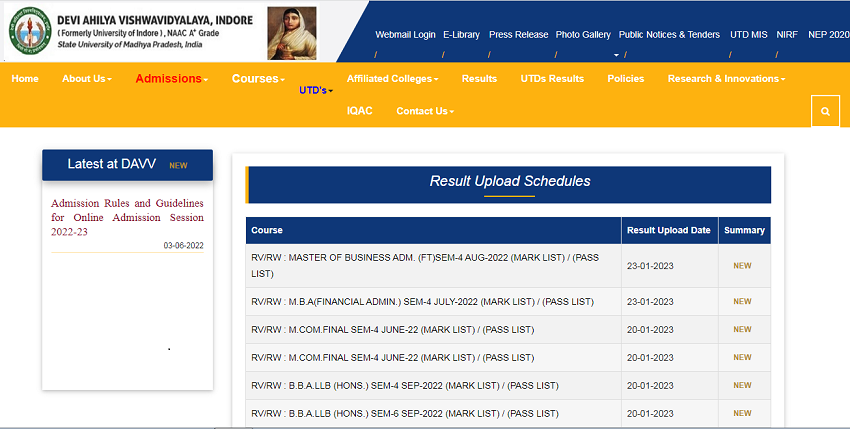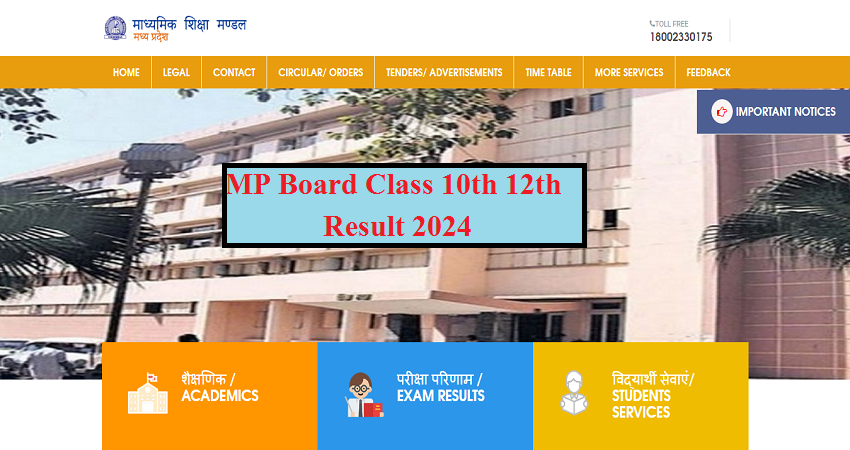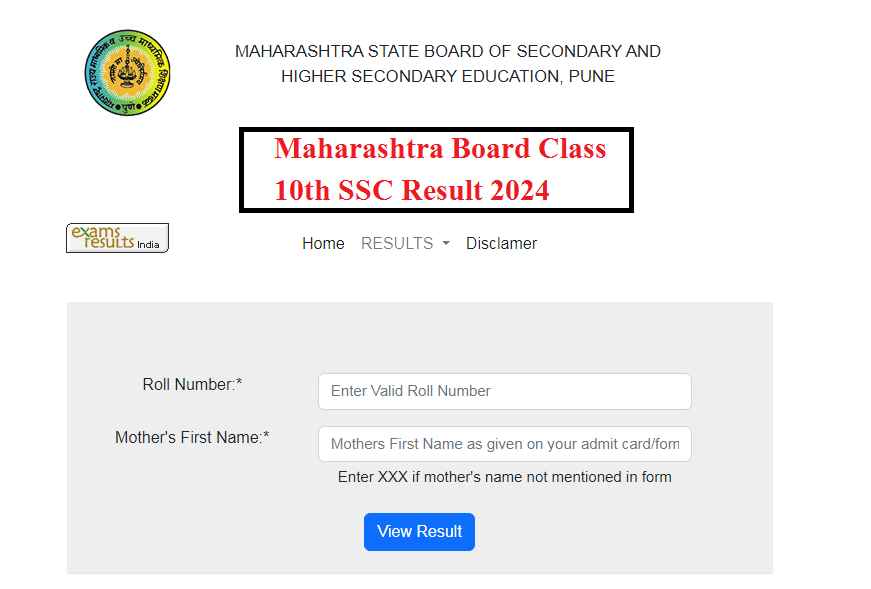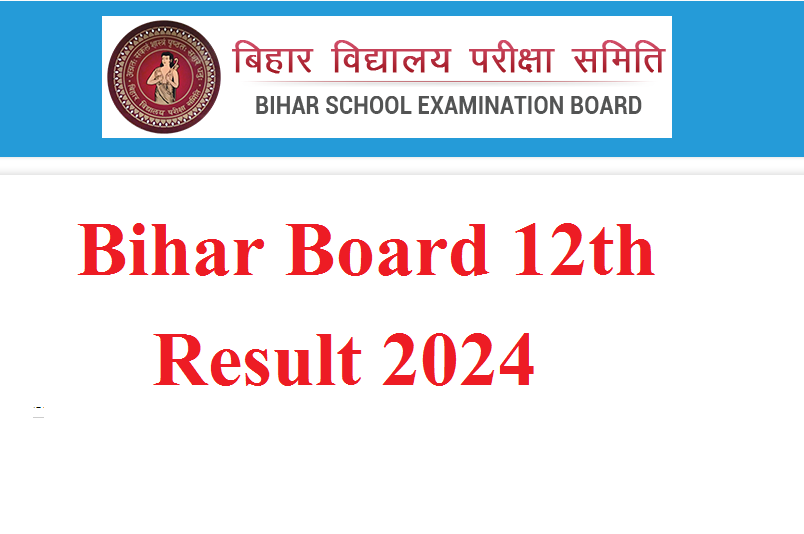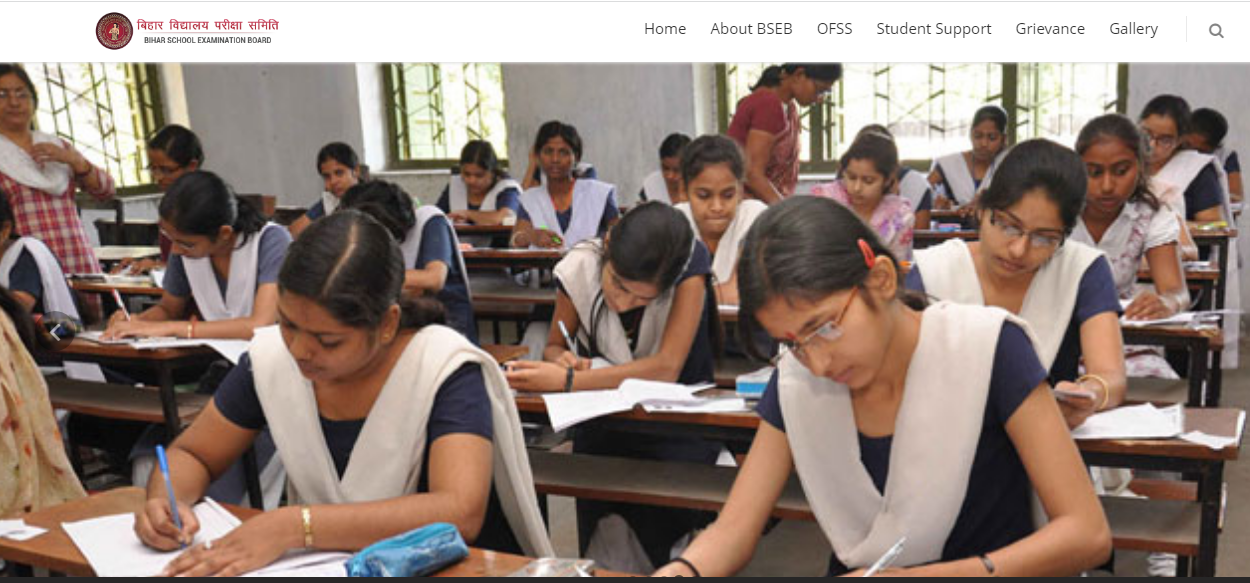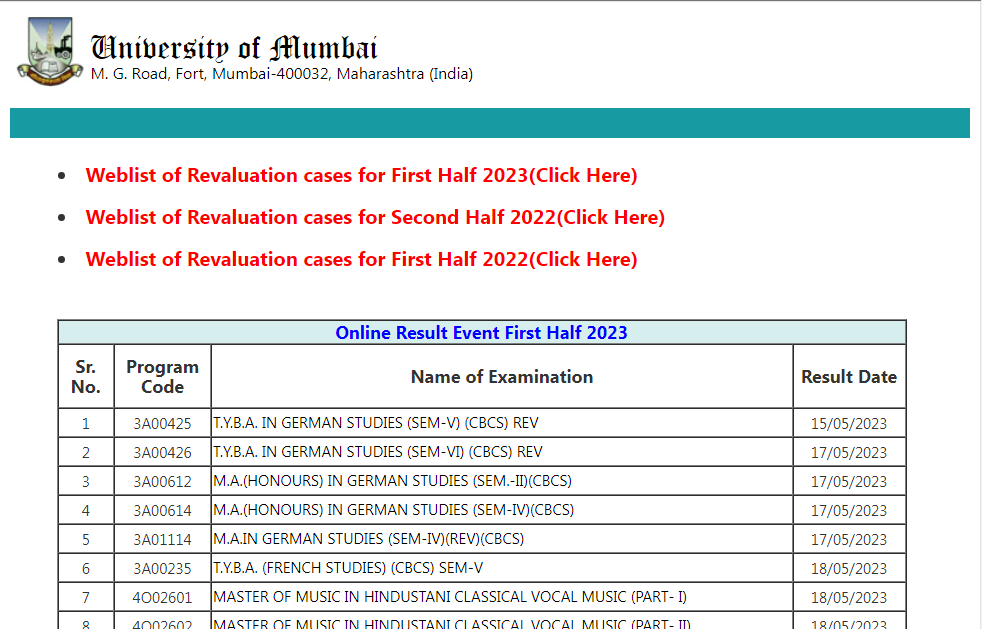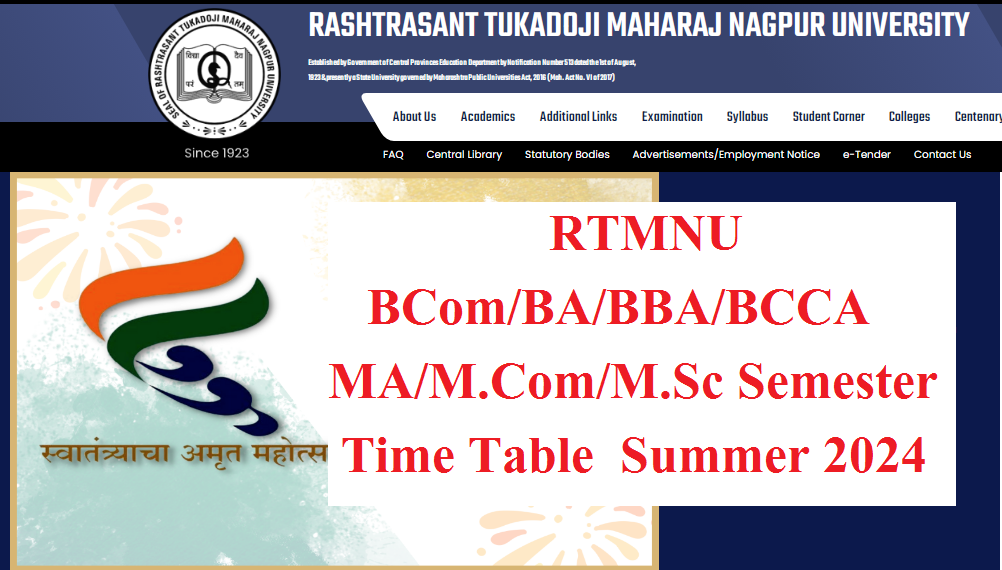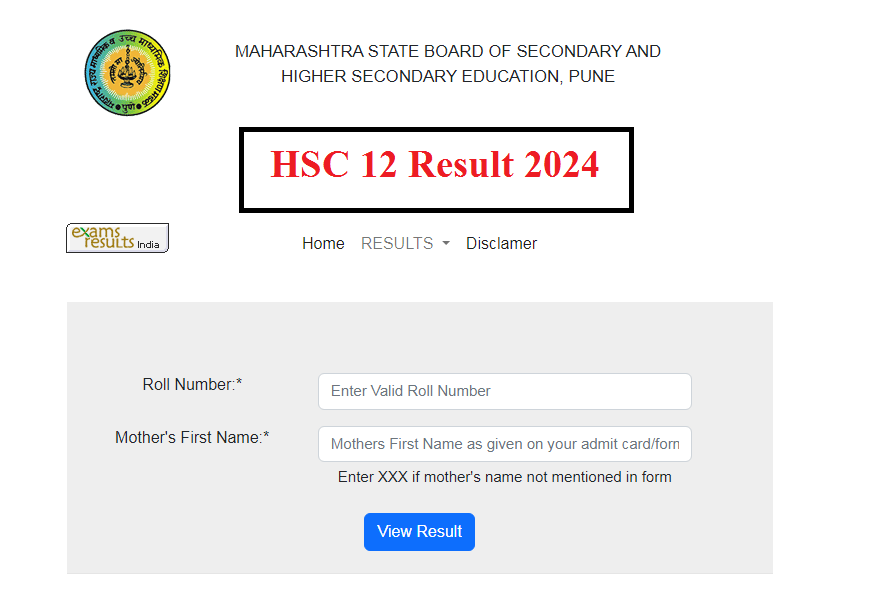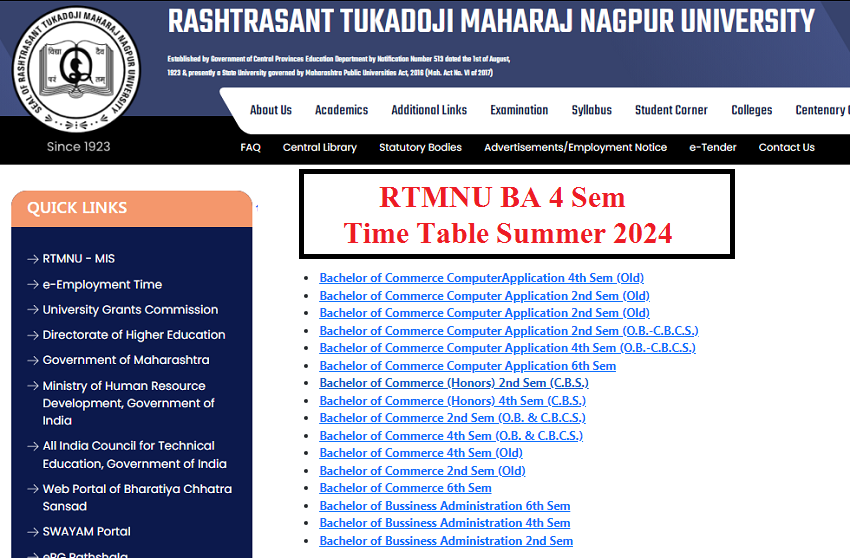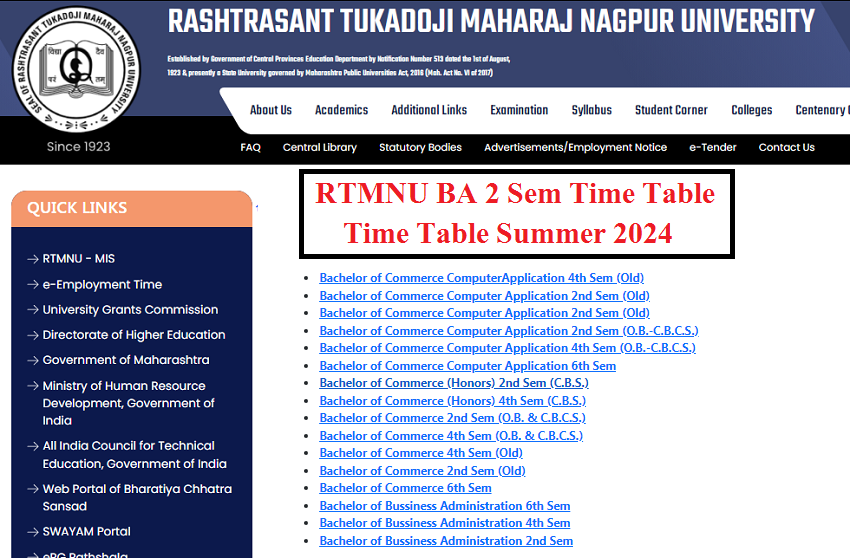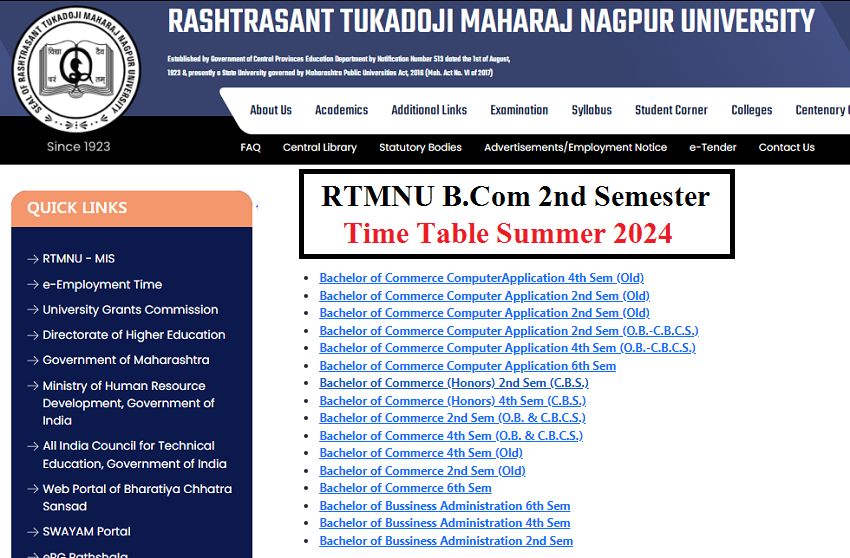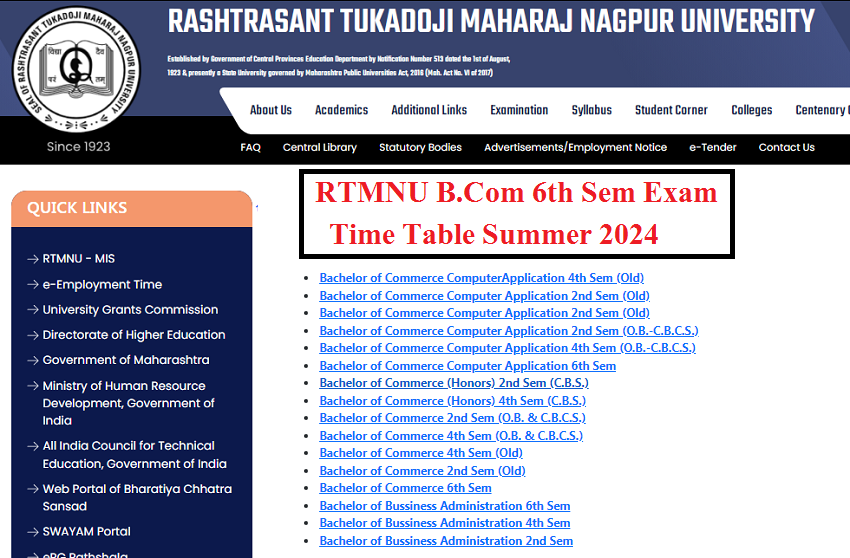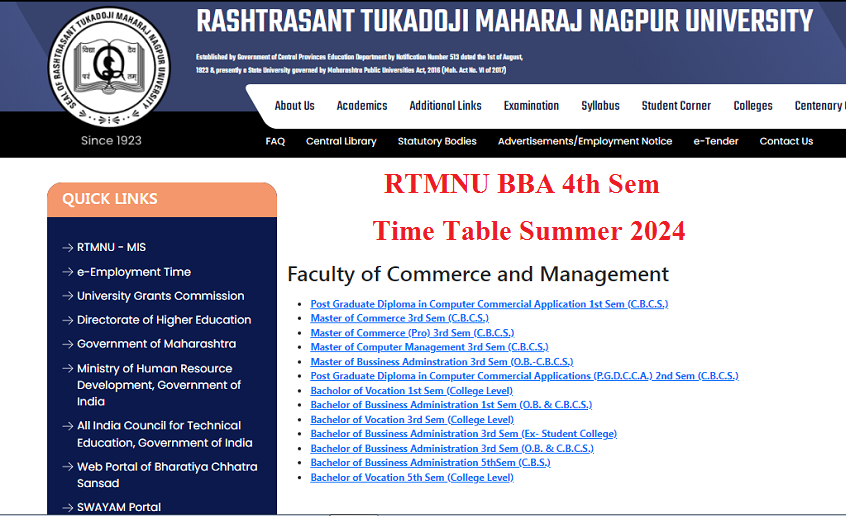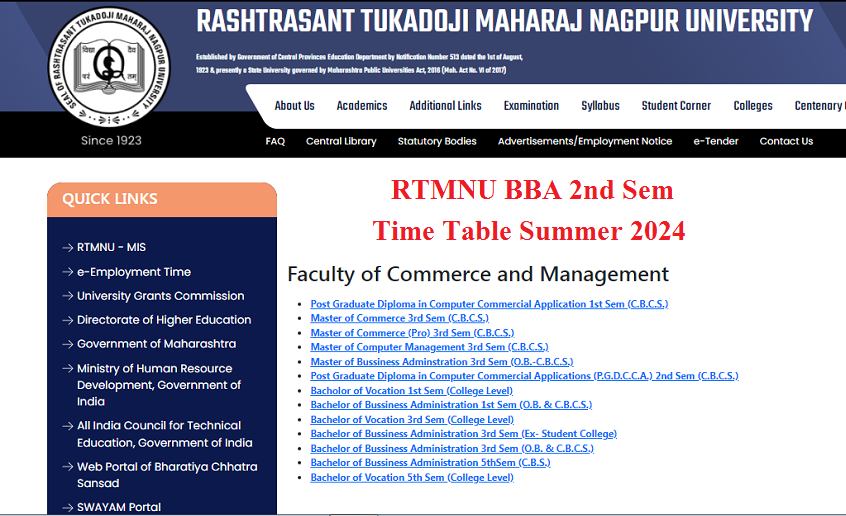RTMNU Revised B.Arch Sem 7 Syllabus 2021
RTMNU Revised B.Arch Sem 7 Syllabus 2021
RTMNU Revised B.Arch Sem 7 Syllabus 2021 | Nagpur University B.Arch Syllabus Part 4| RTMNU Fourth Year B.Arch Syllabus
Nagpur University New Syllabus 2021 is available for Downloading. The latest RTMNU Revised B.Arch Sem 7 Syllabus 2021 is published by Nagpur University. The students looking for this syllabus can Download the PDF Syllabus from given respective Links. We keep adding More details about this Syllabus on this page. We given below the Details updated new syllabus. Students of RTMNU are requested to go though the detail syllabus. You can also download the PDF of syllabus from given link. For More updates keep visiting us.
RTM Nagpur University Revised B.Arch Sem 7 Syllabus 2021 -RTM Nagpur University B.Arch Seventh Semester New Revised Syllabus is given below for Downloading. The students can Download the respective Syllabus from following given details. Just go through the given links & read the given syllabus carefully. Nagpur University Fourth Year New Semester Online Detail syllabus given below.
RTMNU Revised B.Arch Sem 7 Syllabus 2021
Architectural Design VII
Objectives:
Study of this subject will emphasis on design projects of increasing structural and design complexity with full opportunity, coordination, collection and analysis of data. Emphasis will be on preparation of design program considering the technical knowledge & impact of socio-economic factors, preparation of drawings
and detailing.
The studios can focus on:
1. Design orientation of advance and specialised buildings and environmental services, climate and acoustical system oriented buildings, appropriate structural buildings and construction techniques.
2. Orientation on development control rules like, density, zoning, FSI etc. redevelopment.
Sessional Work:
It will include appropriate exercises on one or more of the above mentioned aspects followed by at least 2 design problems arranged in a sequence of complexity. Site visits, audio, visual presentation and library reference is
emphasized.
1. Public Buildings: Theatre, museum, auditorium, recreation, complexes, stadium, etc.
2. High rise apartment, offices, hospitals, laboratories, campus etc.
3. Urban design level problems such as commercial complexes, group housing, area development etc.
Allied Design Studio VII
The course content will be developed by the individual colleges as per their choice of allied design scheme.
Appropriate Building Technology
Objectives:
The objective of this course is to instill the knowledge of alternate thought process dealt with People, Place and Time. The various appropriate materials and techniques evolved in traditional and modern time having environmental and cost concern with its concept and design criteria. They evolved through situation analysis by traditions, individuals and agencies; will help serve society demanding more conscious efforts in conservation of energy.
Techniques to be taught on the following criteria:
1. Concept / Appropriateness behind the technique.
2. Design Criteria for the technique, Advantages, disadvantages.
3. Agencies / Individuals associated with the technique.
4. Potential area for application and
5. Compatibility with other techniques.
Unit I:
Concept of Appropriate Technology and its relevance in present context. Methods and criteria for situation analysis leading to decision making for the choice of the technique.
Unit II:
Soil as building material, Sampling Technique, Stabilization of Soil, Various Field and Lab test. Various techniques for foundation as Inverted Arch Foundation, Inverted Saucer Foundation along with marshy and flood prone areas.
Unit III:
Walling techniques such as Cob wall, Wattle and Daub, Adobe wall, Rammed Earth wall, Wardha Block wall, Compressed Stabilized Earth block masonry, Pre-cast Stone Block wall, Skew brick masonry, Brick masonry using Joshi Bond, Swastik Bond. Water proofing techniques and methods for soil walls.
Unit IV:
Brick floor, Terracotta tile floor, Roofing techniques such as Filler Slab roof, Nubian Vault, Ferro cement vaults, Guna tile vault, RCC Joist Brick panel roofing, etc.
Unit V:
Bamboo as building material with elements like Columns, Trusses, Girders and other applications. Openings such as Frameless doors and windows, Jallies in Brick and Terracotta blocks, Boards and panels using agriculture waste, Bamboo Ply etc.
Unit VI:
%�Cp style=”text-align: justify;”>Services such as Bio-gas plant, Solar water heater, Solar PV panels and concept of net metering, Roof toprain water harvesting technique, Spill water recycling technique, Compost latrines, Kitchen platform for Indian cooking, Garbage recycling such as Vermi compost manure (4 pit).
References:
CBRI, Roorkee Publications and Handbook.
HUDCO Building Center manual and Publications.
Publications of Center of Science for Villages such as „Building Dreams in Mud‟.
„Venu Bharti‟ by Ar. Vinoo Kaley, Nagpur and Articles by Ar. Ashok Joshi, Nagpur.
Publication of Auroville Building Center, Pondicherry.
Publications and manual of Laurie Baker Center, N. Delhi.
Handbook and Publication of Bamboo Mission of India.
RTMNU Revised B.Arch Sem 7 Syllabus 2021
Working Drawing III (Interior Design & Detailing)
Objectives:
To study the Interior Design principles and their applications in interiors and to foster creative ability and inculcate skills to understand and conceive architectural design.
Unit I: Working Drawing (Interior Design):
In continuation of previous semester, students shall be required to produce detailed working drawing ( Plans, Elevations and Furniture details) of all the major furnishing items proposed along with specification.
Unit II: Graphical Presentation:
To produce business graphics, multimedia presentations of the previous semester project.
Sessional Work: Plates on above topics.
References:
Joe, B. (Ed). (2002). Details in Architecture: Vol. I-V. Victoria : The Images Publishing group.
“Human Dimensions and Interior Space” by Panero un Julious & Zclink Martin.
Living Areas·- Internal Spaces by Shirish Vasat Bapat.
Ching, F. D. K. (1987). Interior Design Illustrated. New York : V.N.R. Publications.
Specification
Objectives:
Art of writing specifications for materials and works is very important in which emphasis on the required qualities of materials and proper sequence of construction should be brought out.
Unit I:
Introduction, importance of specifications building construction activity. Types of specifications and its applications. Method of writing specifications (contents, correct order and sequence), use of Indian standard codes and specifications, PWD specifications.
Unit II:
Specifications of basic building materials such as bricks, stones, aggregate, cement, steel, timber etc. Specifications of materials used in flooring and finishing such as ceramic tiles marble-mosaic tiles, paints and varnishes. Specifications of materials used in roofing and roof covering such as tiles, A.C, G.I. and Aluminum sheets etc.
Unit III:
Specifications for fixtures and fastenings; Study of proprietary materials along with manufacturer’s specifications, tade names of such materials.
Unit IV:
Specifications of works for a residential building of load bearing type or R.C.C. framed type. Specification of construction of steel structure, ceilings and partitions, paneling insulation and Water proofing.
Unit V:
Specifications for items of services such as drainage, wafer supply, electrical installation.
Unit VI:
Specifications for demolition-work, temporary construction like sheds, exhibition stalls, gateways.
References 3A
C.P.W.D. Standard Schedule of Rates.
Birdie, G. S. (2005). Text Book of Estimating and Costing. Dhanpat Rai Publishing.
Chakraborty, M. Estimating, Costing, Specification & Valuation.
Dutta, B. N. (1998). Estimating and Costing in Civil Engineering. 24th Ed. UBS Publishers Distributors Ltd.
RTMNU Revised B.Arch Sem 7 Syllabus 2021
Human Settlement Planning
Preface:
This Subject Sets up the premise for domain which is beyond Architecture. Architecture which is confined to a boundary with single ownerships and single land parcels, The domain of Human settlement allows to look at the multiple Owners and Multiple Land parcels.
This domain of humanity which has strong connect with how cities / settlements have grown over times has strong reflections of Culture, History, social Values, Lifestyle and sense of community.
Architecture as integrated part of this Urban Fabric, has strong reflections of cities urban form, values and cultural ethos, which are manifested in built environment with strong sense of belongingness and association. Sensitizing Students to make them aware of broad principles of settlement in such period will help them know how cities have grown and taken shape over a period of time and what has been reflection into Architecture, being integrated part of the urban Domain .
The History of Architecture and theory’s are deeply rooted into the settlement pattern of the urban fabric and hence the study of this subject shall focus on 2 major domains:
Evolution of Urbanity:
Understanding terminologies and key definitions with parameters. Connecting History with stages of Evolution of Settlement and learning’s from the past which offered cities which were process driven, demand driven and evolved out of necessity. This Continues with contribution of Various Masters and Pioneers in the field of Urban Planning and various tools of reading the city .
Urban Design Theories & Present Concept:
This reflects upon the contribution done by Masters and Pioneers in the field of urban design. Develops an understanding about the planning process and how the democratic setup allows people participation and government policies to generate the Urban form which address to the present day demand.
Objectives:
The Study aims at Understanding terminologies and key definitions. Connecting History with stages of Evolution of Settlement and learning’s from the past which offered cities which were process driven, demand driven and evolved out of necessity. This Continues with contribution of Various Masters and Pioneers in the field of Urban Planning and various tools of reading the city.
Unit I:
Introduction to Urban Planning its scope and relevance. Establish Connect between Architecture and Human Settlements. Understanding key definitions of various components which constitutes a settlement. Understanding Culture, Society, Context and Aesthetics. Broad comparison between, Rural – Urban, Local – Global, Urban Planning – Urban Design .
Unit II:
Evolution of Urbanity in India and World. Social and Cultural influence on designing and development of settlements from ancient times through Medieval, Renaissance and Industrial revolution to present day development.
Unit III:
Urban planning in India. Understanding Settlement Planning principles of Vedic & Buddhist settlements. British Planning in India, Planning after independence. Factors governing the location and growth of towns.
Unit IV:
Pioneers and their works, Planning concepts of Patric Geddes, Ebnezer Howard, Le-Corbusier, C. A. Parry, Clarence Stein, Doxiadis, Kevin Lynch, F.L. Wright.
Unit V:
Planning as a team work, Role of Architects/ Planners in a team, Importance and methodologies of surveys in the planning process Development control rules, zoning, density, height, FSI Structures, Transfer of Development Rights (TDR), Special Economic Zones (SEZ), Transit oriented Development (ToD). Factors governing the location and growth of towns. Overview of Planning Legislation.
Sessional Works:
Notes and Seminar of above topics.
The study of this subject continues with emphasis on planning philosophies and the student to carry out the further studies in the specialized field of Urban Planning.
RTMNU Revised B.Arch Sem 7 Syllabus 2021
Building Services IV
Objectives:
This part of the building services deals with various systems and components of Fire detection and Fighting system, provision of essential spaces and elements, Electromechanical means of vertical transportation in buildings,
Communication systems etc., for large scale projects. The students shall be made aware of Architectural design consideration regarding space allocation and design of building elements to anchor these services so as to achieve balance of functional efficiency, user safety and building aesthetics. This shall also help student to establish a sound communication in terms of design with a wide range of consultants, fabricators, wanders and contractors.
Unit I:
Causes of fire in buildings, types of fire, spread of fire, smoke and poisonous gases. Need of fire safety and preventive measures. Fire fighting regulations with reference to National Building code.
Provision in building such as Fire escape, stairways and escape routes. Study of Fire detection systems such as smoke detectors, heat detectors, fire alarms etc. Water demand for fire fighting, provision for storage tanks.
Fire extinguishing systems, Unit fire extinguishers, Chemical and foam extinguishers, Dry and Wet risers, fire hydrants etc.
Unit II:
Electromechanical means of vertical transportation in buildings, requirements, occupant load, study of elevators and types based on operational system and uses. Various components of elevators based on operational system.
Standard space requirements and architectural implications.
Unit III:
Escalators, Trav-o-lators and Conveyor system, its components, arrangements and functioning, space requirements, construction details.
Unit III:
Communication systems in buildings, Video conferencing, Security and Surveillance system, Computer networks. Trenches and conduits to accommodate the systems..
Introduction to Building Automation, Building Management systems, components of
BAS, Architectural implications.
Unit IV:
Systems of DTH, Introduction, Its classification with respect to Single and multi user. DTH layout and its Architectural implications.
Sessional Work:
Layout of Design project including layout for water supply, sanitation, electrical, RWH, Fire Fighting systems, HVAC.
References:
National Building Code (NBC), chapter 5
Bovay, H. E. (1981). Handbook of Mechanical & Electrical systems for Buildings. McGraw-Hill Higher Education.
RTMNU Revised B.Arch Sem 7 Syllabus 2021
Landscape Architecture II
Objectives:
To make students aware about relationship and response of man to his environment. To develop critical thinking towards the field of landscape and understand its scope in practical.
Unit I: Site Planning And Development.
Site Location:
The site must be placed within its proper geographical, political, and functional context. This fixes the site in relation to adjacent land uses, community transportation patterns, utility and infrastructure availability, employment,
commercial, cultural and recreational centers.
Existing Conditions: Depending upon the size and complexity of the site, this may be one or a series of base plans or maps that delineates and evaluates the physical attributes and constraints for the parcel of land. Topography and Slopes: Treatment of these factors requires base information in the form of contours and elevations to a degree of accuracy appropriate to the proposed development.
Geology and Soils: The soils characteristics which are frequently a direct product of the underlying geology. The soils may be important in terms of stability, suitability for structural foundations, erosion susceptibility, surface drainage, and soil fertility to support plant growth.
Vegetation:
Detailed plant identification and location of specimen plants may require field study and measurement. The significance of vegetative information relates to a range of development issues. The visual character and spatial definition of a site is impacted by the amount and category of vegetation – from ground cover
to canopy, from new growth to mature stands of trees, etc.
Hydrology and Drainage:
Surface hydrology is an integral part of the slopes and subsurface drainage systems. The kinds of information normally indicated and analyzed include determination of watersheds (basically a system of ridge lines and valleys or drainage patterns), duration and volume of flow, swales, streams, standing water, and flood plain definition. Susceptibility to erosion and the problem of sedimentation to off-site water flow are also problems to be noted.
Views:
A visual analysis is the most practical means of determining positive and negative on-site and off-site views. This study is useful in determining the visual character of the site itself as viewed from the outside as well as the visual impact of its surroundings upon potential on-site development. Factors to be examined include mass and space definition from natural and man-made elements, off-site views to be accentuated or screened, and on-site view opportunities or problems
Unit II: Landscape Design Project
Application and implementation of landscape elements into a design for a residential areas, urban spaces, campus design at institutional & industrial level, reclaimed lands, etc.
Unit III:
Understanding and analyzing CONTEMPORARY LANDSCAPE DESIGN.
Elements of design, scopes and limitations of the same.
Unit IV: Introduction of SUSTAINABLE LANDSCAPE PRACTICES.
Improve habitats for fauna and flora.
Improve recreational facilities.
Understanding the indigenous practices carried out in and around Indian context.
Sessional Work:
Could be in the form of a write-up, abstracts, Sketches,
Manifestation of Design into Architectural Drawing, etc.
References:
1. Lynch, K. (1962). Site Planning. Cambridge : The MIT Press.
2. Design with Nature, Ian Mcharg.
3. Campus Design in INDIA by Achyut Kanvinde.
4. Simonds, J. O. (2006). Landscape Architecture: A Manual of Land Planning and
Design.
RTMNU Revised B.Arch Sem 7 Syllabus 2021
Elective VII
High Rise Buildings/ Architectural Conservation/ Housing/ Industrial Architecture/ High-tech Architecture/ Institutional Project
Note: Following are the suggestive contents; institutes have freedom to formulate the content as per their school of thought High Rise Buildings
Key Words: criteria, zoning, stacking, systems
Objectives: Ability to understand the process of designing in tall buildings.
Sub Topics :
1. Design philosophy, static and dynamic approach, Structural systems and concepts, Effect of openings. Large panel construction. Foundation superstructure interaction.
2. Gravity and lateral load resisting Structural Systems.
3. Behavior of various structural systems.
4. Basics of stability of tall buildings.
Sessional Work:
Project, Assignment, Site visit
References:
Taranath B.S, “Structural Analysis and Design of Tall Buildings”? McGraw Hill, New York.
Jain, V.K. , Designing and installation of services in building complexes and high rise buildings, Khanna Publishers, New Delhi.
Gupta, Y.P., High rise structures ;design and constructions practices for middle level cities, NewAge International Publishers, New Delhi.
Bryan Stafford Smith & Alexcoull, “Tall building structures Analysis and Design” John Wiley.
HojjatAdeli and AmgadSaleh, “Control optimization and smart structures : high performance bridges and buildings of the future”, John Wiley, New York.
HojjatAdeli and Xiaomo Jiang, “Intelligent infrastructure: neuralnetworks, wavelets and chaos. Theory for intelligent transportation systems and smart structures”, CRC Press, Boca Raton.
Schwartz,Mel, Smart materials, CRC Press, Boca Raton. Architectural Conservation Key Words: Heritage, conserve, culture, survey
Objectives:
To develop understanding about the importance of historical and heritage buildings.
To provide Knowledge about the various techniques of conservation in architecture and the development of the commitment to conserve old buildings of cultural importance.
Sub Topics:
1. Introduction– Definition of conservation, Need for conservational activities, brief study in India and abroad, Role of architect in conservation program.
2. History- Origin and evolution of conservational programs, survey and studies required – methodology and implementation.
3. Community participation- Social, cultural, historical and economical values of Conservational projects, involvement of community. Conflict and compatibility between conservation and development – the need to strike a balance.
4. Case studies of conservation programs- Case studies of conservation programs which are successful by government and non-governmental agencies.
5. Rules and regulations – Rules and regulation, administrative aspects, new concepts in conservation.
Sessional Work:
Assignments, Studios.
References:
Bernard Fielder (INTACH), Guide to Conservation.
Conservation of European Towns.
Peter Marston – The book of the Conservation – Orion House, London. Housing
Key Words: Hierarchy, Economy, affordability
Objectives:
To create awareness about the causes and consequences of housing problems and to impart knowledge about the possible solutions.
Understanding of the various issues involved in urban and rural housing and
knowledge about the planning and design solutions for low income groups.
Sub Topics :
1. Concept of Housing.
2. Housing types.
3. Patterns of housing.
4. Social and cultural and economical factors of housing.
Sessional Work:
Project, Assignment, Site visit.
References:
Babur Mumtaz and Patweikly, Urban Housing Strategies, Pitman Publishing, London, 1976.
GeofreyK.Payne, Low Income Housing in the Development World, John Wiley and Sons, Chichester, 1984.
John F.C.Turner, Housing by people, Marison Boyars, London, 1976.
Martin Evans, Housing, Climate and Ocmfort, Architectural Press, London, 1980.
Forbes Davidson and Geoff Payne, Urban Projects Manual, Liverpool University Press, Liverpool, 1983.
Industrial Architecture
Key Words: Factory, occupancy, long span.
Objectives:
Role of architects in the design of modern industrial buildings.
A basic knowledge of industries in respect of type and category.
Planning considerations in the development of master plan including site
selection and site layout. Design for loading / unloading area.
Sub Topics :
1. Industrial estates.
2. Integrated aspects of design.
3. Steel structures and concrete structures.
4. Aspects of external environments.
Sessional Work:
Project, Assignment, Site visit
References:
Adam J., Hausmann K., and Juttner F., A Design Manual – Industrial Buildings.
Blum M. L., and Naylor J. C., Industrial Psychology, CBS, Delhi.
Drury J., Factories – Planning, Design and Modernization.
Hansen D., Indoor Air Quality Issues.
Munce, J. F., Industrial Architecture – an Analysis of International Building Practice, F. W. Dodge Corporation, New York.
Philips A., The Best in Industrial Architecture.
Reid K., Industrial Buildings; The Architectural Record of a Decade; F. W. Dodge Corporation, New York.
Sinha, R. K. and Heart, S., Cleaner Production – Greening of Industries for Sustainable Development.
High-tech Architecture
Key Words: Structural expression, Modernism, industrial appearance
Objectives:
To understand and explore the new methods of construction.
To understand the material explorations and techniques involved in high tech
Architecture.
Sub Topics:
1. Evolution of high tech Architecture.
2. Characteristics of high tech architecture.
3. Examples of High tech Architecture.
Sessional Work: Assignments, Site visits, Plates
References :
Detail in Contemporary Residential Architecture by Virginia McLeod.
Reyner Banham and the Paradoxes of High Tech by Todd Gannon.
Eco-tech: Sustainable Architecture and High Technology by Catherine Slessor.
Institutional Project 7
Institutional project aims at encouraging institutions to explore different areas. Institution would have freedom to explore into multidisciplinary activities which would explore into other creative discipline and multidisciplinary activities.
This would help student of architecture to have insight into different spectrums of people, place, culture, society, technology etc.
Institution has entire freedom to detail out the assignments to be conducted under this elective.

